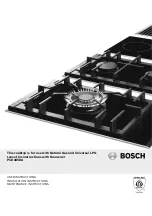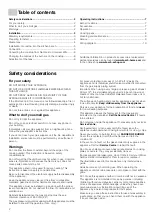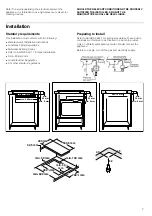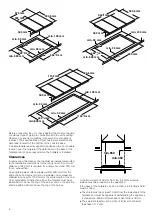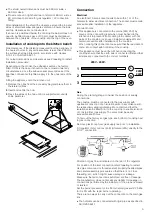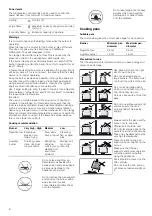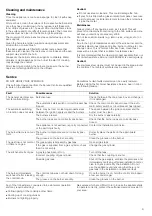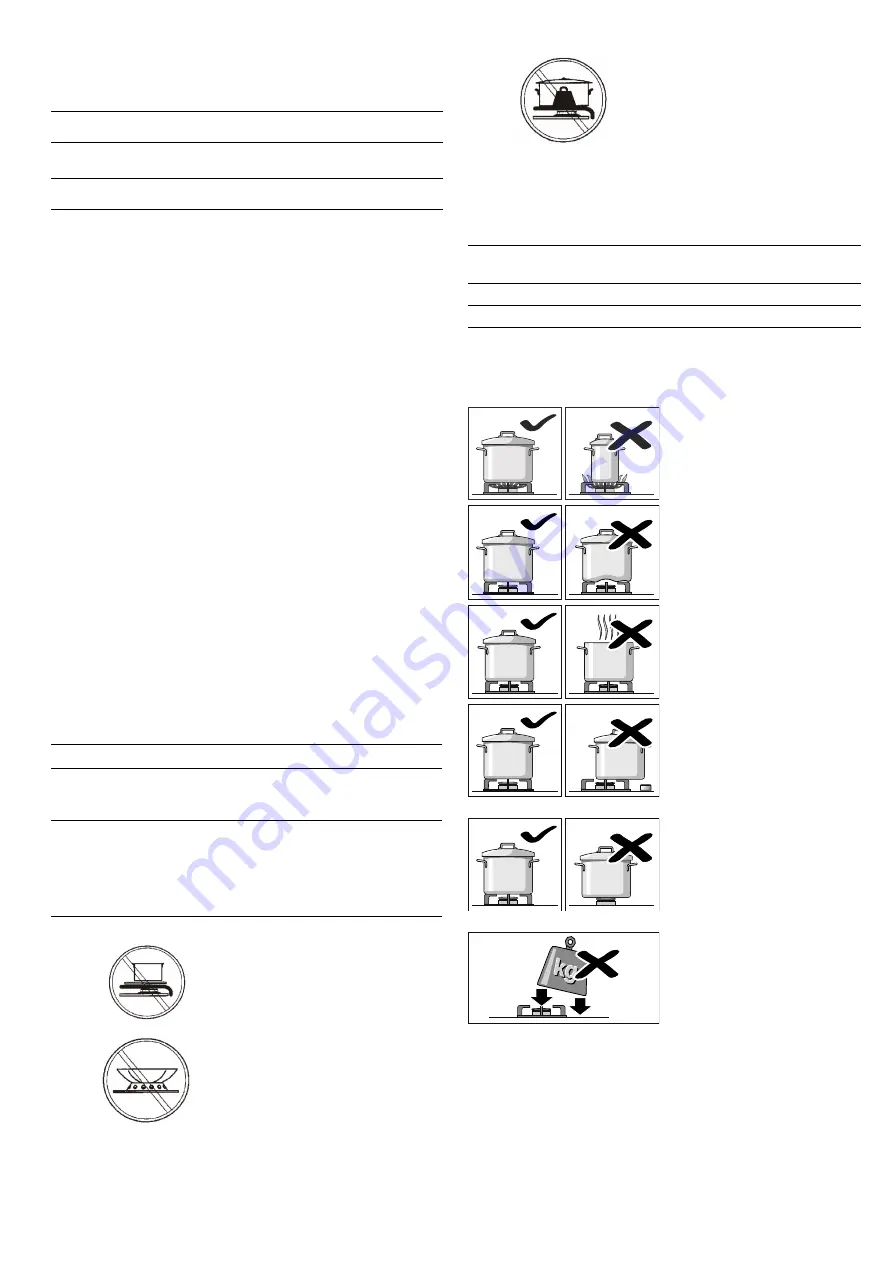
8
Power levels
The progressive control knobs can be used to control the
power needed, from minimum to maximum power.
Warnings
It is normal to hear a soft whistling noise while the burner is
operating.
When first used, it is normal for the burner to give off odours.
This does not pose any risk and does not indicate a
malfunction. They will disappear in time.
An orange-coloured flame is normal. This is caused by the
presence of dust in the atmosphere, spilt liquids, etc.
If the burner flames are accidentally blown out, switch off the
burner operating control knob and do not try to relight it for at
least 1 minute.
A few seconds after the burner is switched off, a sound (thud)
will be produced. This is not a fault - this means that the safety
device is no longer operating.
Keep the burner as clean as possible. If the ignition sparkers
are dirty they will not light properly. Clean them periodically
using a small non-wire brush. Bear in mind that the ignition
sparkers must not suffer any serious impacts.
Use “Large” setting to bring the pan to the boil, then adjust the
flame between “Large flame” and “Economy flame” to maintain
the required pan temperature.
Important:
The use of a cooktop leads to the production of heat and
moisture in the kitchen. For this reason make sure that the
room is properly ventilated. Keep natural ventilation openings,
such as windows, open or provide a mechanical ventilation
device (e.g. a range hood or overhead exhaust fan). An orangy
flame is normal and simply indicates the presence of salt in the
atmosphere (from cooking). If the flame has yellow patches,
this is not a fault (of any kind).
Cooking recommendation
Cooking pans
Suitable pans
The chart below gives the correct pan usage for each burner.
Precautions for use
The following advice is intended to help you save energy and
prevent pan damage:
Setting
Û
Control off
Large flame
—
Maximum capacity or aperture and elec-
tricity on
Economy flame
˜
Minimum capacity or aperture
Burner
Very high - High Medium
Low
Rapid burner Escalopes,
steaks, ome-
lettes, frying
Rice, white
sauce, ragout
Steaming:
fish, vegeta-
bles
Auxiliary
burner
Cooking: casse-
roles, rice pud-
ding, caramel
Defrosting
and slow
cooking: veg-
etables, fruit
and frozen
products
Melting: but-
ter, choco-
late, jelly
Do not place anything, eg.
flame tamer, asbestos mat,
between pan and pan support
as serious damage to the
appliance may result.
Do not remove the pan support
and enclose the burner with a
wok stand as this will
concentrate and deflect heat
onto the hotplate.
Do not use large pots or heavy
weights which can bend the
pan support or deflect flame
onto the hotplate.
Burner
Minimum pan
diameter
Maximum pan
diameter
Rapid burner
22 cm
26 cm
Auxiliary burner
12 cm
16 cm
Use pans which are the right
size for each burner.
Do not use small pans on
large burners. The flame must
not touch the sides of the pan.
Do not use damaged pans,
which do not sit evenly on the
hob. Pans may tip over.
Only use pans with a thick, flat
base.
Do not cook without using a lid
and make sure the lid is
properly fitted. This wastes
energy.
Always centre the pan over the
burner, not to one side.
Otherwise it could tip over.
Do not place large pans on the
burners near the control knobs.
These may be damaged by the
very high temperatures.
Place the pans on the pan
supports, never directly on the
burner.
Make sure that the pan
supports and burner caps are
correctly positioned before
using the appliance.
Pans should be placed on the
hob carefully.
Do not strike the hob and do
not place excessive weight on
it.

